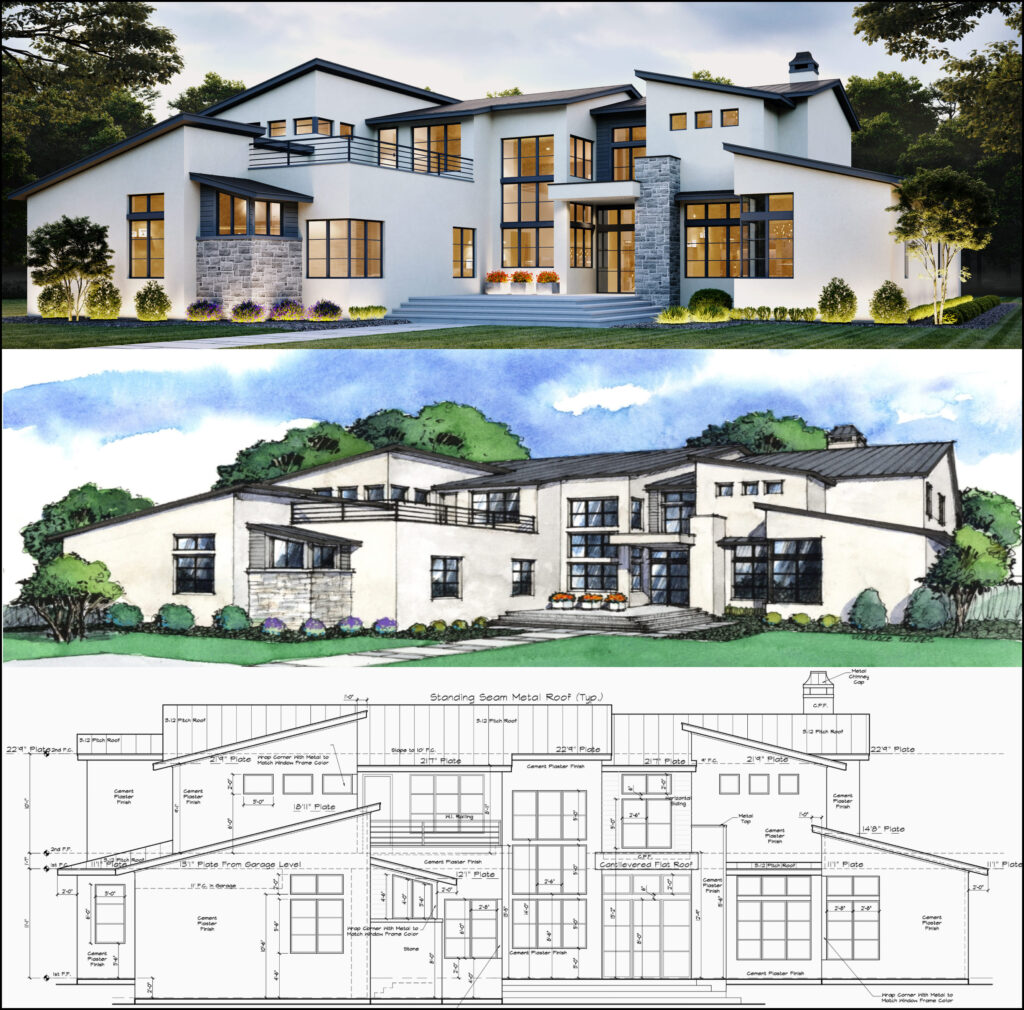The Creative Refine Behind Effective Jobs from CDA Architects
The Creative Refine Behind Effective Jobs from CDA Architects
Blog Article
A Detailed Review of Architectural Styles and Their Influence on Modern City Planning and Development
Building styles have actually long offered as a mirror to the societal values and technical improvements of their time, playing an important role in forming contemporary city planning and development. From the majesty of Neoclassicism to the utilitarian method of Brutalism, each style has presented distinct concepts that affect metropolitan aesthetic appeals and functionality.
Historic Review of Architectural Styles

As cultures transitioned with the Middle Ages, Gothic architecture arised, identified by its verticality and complex outlining, mirroring the spiritual desires of the period. The Renaissance marked a revival of classical perfects, merging art and architecture in ingenious ways that influenced subsequent designs throughout Europe.

Today, building styles remain to advance, driven by globalization and sustainability issues, mirroring a dynamic interplay in between heritage and innovation. This historic review underscores the relevance of architecture as a mirror of societal development and as a stimulant for urban advancement.
Trick Architectural Styles Explained
The diversity of architectural styles mirrors the myriad impacts that shape our built atmosphere, each personifying distinctive characteristics and cultural relevances. Trick building designs include Classical, Gothic, Baroque, Modernism, and Postmodernism, each representing special historic contexts and visual ideologies.
Classical architecture, rooted in ancient Greece and Rome, highlights balance, percentage, and using columns (cda architects). On the other hand, Gothic style, prospering between Ages, is characterized by pointed arches, ribbed vaults, and flying buttresses, producing a spiritual top quality in cathedrals. Baroque style, arising in the 17th century, is noted by majesty, intricate embellishment, and a vibrant interaction of light and darkness
Innovation, which got momentum in the early 20th century, prioritizes feature over kind, making use of brand-new products like steel and glass to produce minimalist structures. Postmodernism, reacting versus the austerity of Modernism, accepts eclecticism and historic recommendation, often incorporating playful components and paradox.

Effect On Urban Preparation
In shaping the advancement of cities, building designs significantly influence metropolitan planning choices. The selection of building design often dictates the aesthetic appeals, performance, and total personality of city settings.
Furthermore, architectural styles can impact zoning regulations and land use policies. Urban planners should think about the prevailing architectural trends when developing districts, guaranteeing that new developments harmonize with existing structures. This consideration cultivates natural city landscapes and boosts neighborhood identity.
The execution of certain building designs can additionally affect socioeconomic elements within a city. For instance, premium modern styles may attract affluent residents and businesses, bring about gentrification, while extra inexpensive real estate remedies may prioritize practical and lasting styles to accommodate varied populaces. Inevitably, the interplay in between architectural designs find more information and metropolitan preparation produces dynamic cities that show both historical context and modern needs, forming the lived experiences of their residents
Sustainability and Modern Style
Architectural designs play a critical duty in attending to modern difficulties, specifically in the realm of sustainability. As city areas increase and environmental worries magnify, modern-day architecture progressively embraces sustainable layout principles that prioritize power efficiency, resource preservation, and minimal environmental influence.
Contemporary architectural motions, such as biophilic layout and green design, supporter for structures that balance with their environments, making use of natural materials and promoting biodiversity. These designs often integrate eco-friendly power sources, such as solar panels and wind generators, to lower reliance on fossil fuels and lower carbon impacts.
Moreover, the assimilation of advanced innovations, such as wise structure systems, boosts power management, optimizing resource usage while making sure owner convenience. Cutting-edge water management strategies, including rainwater harvesting and greywater recycling, further contribute to sustainable metropolitan settings.
Notably, More about the author sustainability expands beyond environmental worries; it incorporates social and financial measurements also. By promoting neighborhood well-being and promoting inclusivity, modern architectural designs straighten with lasting advancement goals. As a result, the evolution of architectural click here for info techniques remains to form durable cities that not only meet the needs of today yet likewise protect the future for generations to come.
Community Involvement in Style
Community engagement in layout functions as an important bridge between engineers and the populations they serve, making certain that the developed environment mirrors the requirements and aspirations of its customers. This collective process welcomes community participants to contribute their understandings and preferences, cultivating a sense of possession and obligation toward the areas they inhabit.
Reliable neighborhood involvement utilizes numerous techniques, such as workshops, studies, and public online forums, to collect diverse viewpoints. These methods promote a two-way dialogue, permitting architects to comprehend local contexts while equipping homeowners to voice their problems and desires. This inclusivity not just boosts the style top quality but likewise advertises social equity by addressing the special challenges dealt with by marginalized teams.
Moreover, community interaction can lead to innovative options that could not emerge in a standard layout process. By integrating regional expertise and social values, architects can produce rooms that reverberate more deeply with users, improving functionality and sustainability. Inevitably, prioritizing neighborhood engagement in style processes leads to environments that support social communications, assistance health, and strengthen community ties, thus playing an essential duty in forming modern-day urban landscapes.
Conclusion
Building designs have profoundly affected contemporary city planning and growth, mirroring developing cultural and technical contexts. As cities proceed to grow and adjust, the continuous dialogue in between architectural heritage and modern layout principles will certainly stay vital in creating comprehensive, dynamic spaces that boost high quality of life and promote social equity.
Report this page